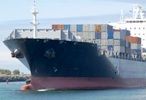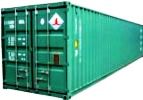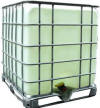| Mubychem Group, established in 1976, is the pioneer manufacturer of Zinc Ammonium Chloride Galvanizing Flux, Pharmaceutical, Fragrance & Flavor chemicals in India. Mubychem Group has several manufacturing facilities spread across Gujarat and Mumbai India and world wide contacts and toll manufacturers. We are exporting globally to countries like USA, Canada, Europe, UAE, South Africa, Tanzania, Kenya, Egypt, Nigeria, Uganda, Turkey, Mexico, Brazil, Chile, Argentina, Dubai etc. |
The participating units have one or more accreditations like FDA - GMP approval; ISO-9001 Certified; "REACH"registered; ISO-22000; Kosher Certified;Halal Certified; HACCP. We offer Pure & IP BP USP FCC Food Grade ACS AR Analytical Reagent Grades of Chemicals | |







Zinc Ammonium Chloride Galvanizing Flux Manufacturers, MSDS Sheet
The product is offered as Mono, Double, Triple and Quad Salt<
Zinc Ammonium Chloride Manufacturers, Galvanizing Flux Manufacturers Specifications
Zinc Ammonium Chloride MSDS Sheet, Material safety Data Sheet
1. Product Identification
Synonyms: Galvanizers Flux.CAS No.: Single Salt: 52628-25-8; Double Salt: 14639-97-5; Triple Salt: 14639-98-6; Quad Salt
EINECS: EC Number: 258-054-8; 238-687-6; 238-688-1; --
Molecular Weight: 189.80; 243.30; 296.76; 350.25
Chemical Formula: ZnCl2-NH4Cl; ZnCl2-(NH4Cl)2; ZnCl2-(NH4Cl)3; ZnCl2-(NH4Cl)4
| Type of Salt ## CAS No. ## EINECS ## Molecular Weight | Molecular Formula | Zinc Content > |
| Zinc Ammonium Chloride Mono Salt ## 52628-25-8 ## 258-054-8 ## 189.80 | ZnCl2-NH4Cl | 34.3% |
| Zinc Ammonium Chloride Double Salt ## 14639-97-5 ## 238-687-6 ## 243.30 | ZnCl2-(NH4Cl)2 | 26.7% |
| Zinc Ammonium Chloride Triple Salt ## 14639-98-6 ## 238-688-1 ## 296.76 | ZnCl2-(NH4Cl)3 | 21.9% |
| Zinc Ammonium Chloride Quad Salt ## -- ## -- ## 350.25 | ZnCl2-(NH4Cl)4 | 18.6% |
2. Composition/Information on Ingredients
Ingredient ---------- CAS No. ---- Percent - Hazardous
Ammonium Chloride --- 12125-02-9 - 28-61% -- Yes
Zinc Chloride ------- 7646-85-7 -- 39-72% -- Yes
3. Hazards Identification
Emergency Overview
WARNING! CAUSES IRRITATION TO SKIN, EYES AND RESPIRATORY TRACT. HARMFUL IF SWALLOWED OR INHALED.
OSHA Hazards: Harmful by ingestion, inhalation and contact; Corrosive.
HMIS Classification
Health hazard: 3
Flammability: 0
Physical hazards: 0
NFPA Rating
Health hazard: 2
Fire: 0
Reactivity Hazard: 0
Potential Health Effects
Inhalation: Causes irritation to the respiratory tract. Symptoms may include coughing, shortness of breath.
Ingestion: Swallowing this material may be harmful or fatal. Causes irritation to the gastrointestinal tract. Symptoms may include nausea, vomiting and diarrhea.
Skin Contact: Causes irritation to skin. Symptoms include redness, itching, and pain.
u>Eye Contact: Zinc ammonium chloride contact may cause irritation, redness, and pain.
Chronic Exposure: Overexposure to this material suggested as a cause of the following effects in laboratory animals: liver abnormalities, kidney damage.
Aggravation of Pre-existing Conditions: No information found.
Carcinogenic Effects: Not a reported carcinogen.
Mutagenic Effects: Not available.
Teratogenic Effects: Not available.
Developmental Toxicity: Not available.
4. First Aid Measures
Always seek medical attention after first aid measures are provided.
Inhalation: Remove to fresh air. If not breathing, give artificial respiration. If breathing is difficult, give oxygen. Get medical attention.
Ingestion: Never give anything by mouth to an unconscious person. Get medical attention.
Skin Contact: Wipe off excess material from skin then immediately flush skin with plenty of water for at least 15 minutes. Remove contaminated clothing and shoes. Get medical attention. Wash clothing before reuse. Thoroughly clean shoes before reuse.
Eye Contact: Immediately flush eyes with plenty of water for at least 15 minutes, lifting lower and upper eyelids occasionally. Get medical attention immediately.
Note to Physician: -.
5. Fire Fighting Measures
Flammability of the Product: The product is not flammable.
At fire temperatures ammonium chloride begins to corrode metals and may dissociate into ammonia and hydrogen chloride. Mixtures of about 16% to 25% (by volume) ammonia gas in air are flammable.
Auto-Ignition Temperature: NA.
Flash Points: NA.
Flammable Limits: NA.
Products of Combustion: It emits toxic oxides of carbon and oxides of nitrogen when heated to decomposition.
Fire: The product is not flammable.
Explosion: Slightly explosive in presence of heat.
Fire Extinguishing Media: Water spray. Use means suitable for extinguishing surrounding fire. Water spray, dry chemical, alcohol foam, or carbon dioxide.
Special Information: In the event of a fire, wear full protective clothing and NIOSH-approved self-contained breathing apparatus with full face piece operated in the pressure demand or other positive pressure mode. At high temperatures or when moistened under fire conditions, it may produce toxic or irritating fumes.
6. Accidental Release Measures
Small Spill: Avoid dust formation. Avoid breathing dust. Ensure adequate ventilation. Use appropriate tools to put the spilled solid in a convenient waste disposal container. Finish cleaning by spreading water on the contaminated surface and dispose of according to local and regional authority requirements.
Large Spill: Do not let the product enter drains. Use a shovel to put the material into a convenient waste disposal container. Finish cleaning by spreading water on the contaminated surface and allow evacuating through the sanitary system.
US Regulations (CERCLA) require reporting spills and releases to soil, water and air in excess of reportable quantities. The toll free number for the US Coast Guard National Response Center is (800) 424-8802.
7. Handling and Storage
Do not breathe dust. Wear suitable protective clothing. In case of insufficient ventilation, wear suitable respiratory equipment.
Avoid contact with skin and eyes. Avoid formation of dust and aerosols. Wash hands thoroughly after handling. Provide appropriate exhaust ventilation at places where dust is formed. If you feel unwell, seek medical attention.
Keep Zinc ammonium chloride in a tightly closed container, stored in a cool, dry, ventilated area. Protect against physical damage or contact with oxidizing material and combustible substances.
Zinc Chloride is a Toxic Chemical under Section 313 of Title III/SARA, and 40 CFR Part 372.
Ammonium Salts Generate Ammonia in Water. For SARA 313 Requirements, 10% of the Total ammonia present in aqueous ammonia solutions is reportable.
8. Exposure Controls/Personal Protection
Airborne Exposure Limits:
---- For Ammonium Chloride:
ACGIH: | 10 mg/m3 TWA (fume) |
OSHA: | 10 mg/m3 TWA |
NIOSH: | 10 mg/m3 TWA (fume) |
ACGIH: | 1 mg/m3 TWA (fume) 2 mg/m3 STEL (fume) |
OSHA: | 1 mg/m3 TWA (fume) 2 mg/m3 STEL (fume) |
NIOSH: | 1 mg/m3 TWA (fume) 2 mg/m3 STEL (fume) |
Ventilation System: A system of local and/or general exhaust is recommended to keep employee exposures as low as possible. Local exhaust ventilation is generally preferred because it can control the emissions of the contaminant at its source, preventing dispersion of it into the general work area.
Personal Respirators (NIOSH Approved): For conditions of use where exposure to dust or mist is apparent and engineering controls are not feasible, a particulate respirator may be worn. For emergencies or instances where the exposure levels are not known, use a full-face positive-pressure, air-supplied respirator.
Skin Protection: Wear protective gloves and clean body-covering clothing.
Eye Protection: Use chemical safety goggles and/or full face shield where dusting or splashing of solutions is possible. Maintain eye wash fountain and quick-drench facilities in work area.
Other Control Measures: Maintain good housekeeping in work area. Dust deposits on floors and other surfaces may pick up moisture and cause the surfaces to become slippery and present safety hazards. Handle in accordance with good industrial hygiene and safety practice. Wash hands after handling.
9. Physical and Chemical Properties
Appearance: Zinc Ammonium Chloride is white powder or granules.
Odor: None
Solubility: Readily soluble in water
pH: 5.5 at 1% solution at 25 C (77F)
Density: NA
Molecular Weight: As in para1.
Molecular Formula: As in para1.
% Volatiles by volume @ 21C (70F): 0
Boiling Point: NA
Melting Point: NA
Vapor Density (Air=1): No information found
Vapor Pressure (mm Hg): No information found
Evaporation Rate (BuAc=1): No information found
10. Stability and Reactivity
Stability: Zinc ammonium chloride is stable under ordinary conditions of use and storage. The material is delinquent and should be stored in tightly closed containers.
Hazardous Decomposition Products: Involvement in a fire causes decomposition to form hydrogen chloride and ammonia.
Hazardous Polymerization: Will not occur.
Incompatibilities: Concentrated acids, strong bases, silver salts, potassium chlorate, ammonium nitrate, bromine trifluoride and iodine heptafluoride. Ammonium chloride reacts explosively with potassium chlorate or bromine trifluoride, and violently with bromide pentafluoride, ammonium compounds, nitrates, and iodine heptafluoride. Explosive nitrogen trichloride may result from reaction of ammonium chloride and hydrogen cyanide.
Conditions to Avoid: Moisture, Heat, Incompatibles.
11. Toxicological Information
Routes of Entry: Inhalation, Ingestion, Contact.
Toxicity to Animals:
Oral rat LD50 : 1450 mg/kg Investigated as a mutagen for Ammonium Chloride
Oral rat LD50: 350 mg/kg. Investigated as a tumorigen, mutagen, and reproductive effector for Zinc Chloride.
Remarks on Toxicity to Animals: Not available.
Carcinogenic Effects: Not a reported carcinogen.
Mutagenic Effects: Mutagenic for bacteria and/or yeast. May cause damage to blood.
Teratogenic Effects: Not available.
Developmental Toxicity: Not available.
Chronic Effects on Humans: No information found.
Other Toxic Effects on Humans: Hazardous in case of skin contact (irritant), of ingestion, of inhalation. Also classed as toxic.
Special Remarks on Chronic Effects on Humans: -
Special Remarks on other Toxic Effects on Humans: -
Acute Potential Health Effects:
Inhalation: Zinc ammonium chloride causes irritation to the
respiratory tract and mucus membrane.
Ingestion: Harmful if swallowed. May cause irritation to the gastrointestinal tract. Swallowing this material may be harmful or fatal.
Skin Contact: Zinc ammonium chloride causes irritation to skin.
Eye Contact: Zinc ammonium chloride contact may cause irritation, redness, and pain.
Chronic Exposure: Overexposure to this material suggested as a cause of the following effects in laboratory animals: liver abnormalities, kidney damage.
12. Ecological Information
Environmental Toxicity:| Ammonium chloride (12125-02-9) Test & Species | Conditions |
| 24 Hr LC50 Lepomis macrochirus | 725 mg/L |
| 96 Hr LC50 Cyprinus carpio | 209 mg/L [static] |
| 24 Hr LC50 Daphnia magna | 202 mg/L |
Biodegradability: -
BOD5 and COD: Not available.
Environmental Fate: No information found.
13. Disposal Considerations
Whatever cannot be saved for recovery or recycling should be managed in an appropriate and approved waste disposal facility. Processing, use or contamination of this product may change the waste management options. State and local disposal regulations may differ from federal disposal regulations. Dispose of container and unused contents in accordance with federal, state and local requirements. Small amounts of this material may be suitable for sanitary sewer or trash disposal.
14. Transport Information
Ammonium Chloride is not regulated.
Zinc Chloride
DOT (USA):
Proper Shipping Name: Zinc chloride anhydrous
Hazard Class: 8
UN/NA: UN-UN-1840 (1840 is for solution & 2331 is for powder material)
Packing Group: III
THIS MATERIAL IS HAZARDOUS AS DEFINED BY 49 CFR 172.101 BY THE U.S. DEPARTMENT OF TRANSPORTATION.
TRANSPORT CANADA TRANSPORTATION OF DANGEROUS GOODS REGULATIONS:
This material is considered as dangerous goods, per regulations of Transport Canada.
I.M.O.
Proper Shipping Name: Zinc chloride anhydrous
Hazard Class: 8
UN/NA: UN-1840 (1840 is for solution & 2331 is for powder material)
Packing Group: III
Air, I.C.A.O.
Proper Shipping Name: Zinc chloride anhydrous
Hazard Class: 8
UN/NA: UN-1840 (1840 is for solution & 2331 is for powder material)
Packing Group: III
NORTH AMERICAN EMERGENCY RESPONSE GUIDE NUMBER (2000): 154
TRANSPORT CANADA TRANSPORTATION OF DANGEROUS GOODS REGULATIONS:
This material is considered as dangerous goods, per regulations of Transport Canada.
15. Regulatory Information
OSHA Hazards: Listed.
This material contains one or more of the following chemicals required to be identified under SARA Section 302 (40 CFR 355 Appendix A), SARA Section 313 (40 CFR 372.65) and/or CERCLA (40 CFR 302.4).
| Ammonium chloride (12125-02-9) CERCLA: | 5000 lb final RQ; 2270 kg final RQ |
| Zinc chloride (7646-85-7) CERCLA: | 1000 lb final RQ; 454 kg final RQ |
The following components appear on one or more of the following state hazardous substances list:
| Component | CAS | CA MA MN NJ PA RI |
| Ammonium chloride | 12125-02-9 | Yes |
| Zinc chloride | 7646-85-7 | Yes |
WHMIS IDL
The following components are identified under the Canadian Hazardous Products Act Ingredient Disclosure List:Component | CAS # | Minimum Concentration |
Ammonium chloride | 12125-02-9 | 1 % |
Zinc chloride | 7646-85-7 | 1 % |
Component | CAS # | TSCA | CAN |
Ammonium chloride | 12125-02-9 | Yes | DSL |
Zinc chloride | 7646-85-7 | Yes | DSL |
TSCA (Toxic Substances Control Act) Status
The intentional ingredients of this product is listed.
SARA 302 Components - 40 CFR 355 Appendix A: None
Section 311/312 Hazard Class - 40 CFR 370.2
Immediate(X) Delayed(X) Fire( ) Reactive( ) Sudden Release of Pressure( )
SARA 313 Components - 40 CFR 372.65: Ammonium Chloride is not reportable. Zinc Chloride is listed.
USA Federal: Ammonium Chloride and Zinc Chloride are designated as hazardous substances under Section 311(b)(2)(A) of the Federal Water Pollution Control Act.
California Proposition 65: None
Canada:
WHMIS: Class D1B: Materials Causing Immediate and Serious Toxic Effects; Class E: Corrosive
DSL: The components of this material are listed on the DSL Inventory.
16. Other Information
Disclaimer:
******************************
Our company provides this Zinc Ammonium Chloride MSDS sheet in good faith but makes no representation as to its comprehensiveness or accuracy. This Zinc Ammonium Chloride MSDS sheet is intended only as a guide to the appropriate precautionary handling of the material by a properly trained person using this product. The above information has been compiled from various sources and has the possibility of discrepancy and being out-dated information. Individuals receiving the information must exercise their independent judgment and do further search in determining its appropriateness for a particular purpose. In no case shall our company be liable to loss or damages by the product user.
******************************
Zinc Ammonium Chloride Manufacturers
Galvanizing Flux Manufacturers at:
MUBYCHEM GROUP
CHINCHBUNDER, MUMBAI 400009, INDIA
TEL: (OFFICE) 91-22-23774610, 91-22- 23723564. 91-22-23728264
e-mail: anmol@pcmenergy.com

Copyright and Usual Disclaimer is Applicable.
Global or International Zinc Ammonium Chloride & Galvanizing Flux Suppliers, Exporters, Importers, Manufacturers
Calcium Phosphate Tribasic MSDS
If I give you “My Word” Nobody can undo it.
If I sign an “Agreement” my Lawyer will undo it
Perfection is made up of small thing but it is not small.

